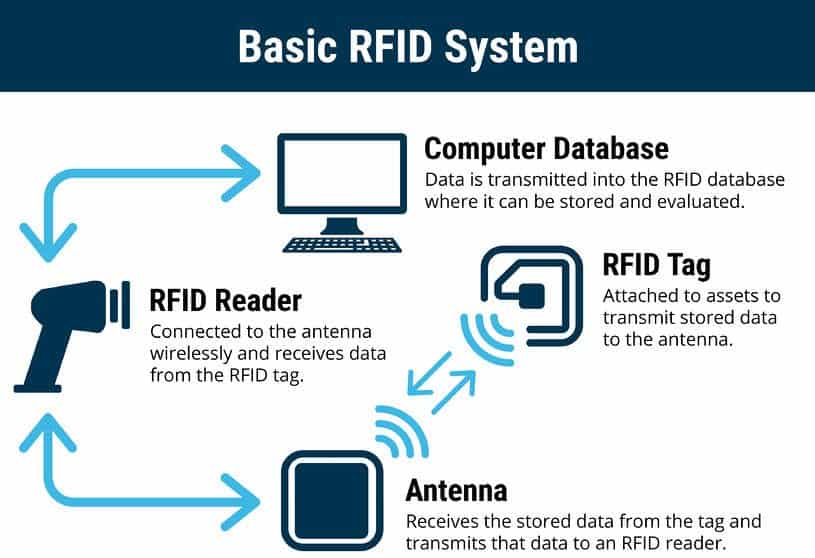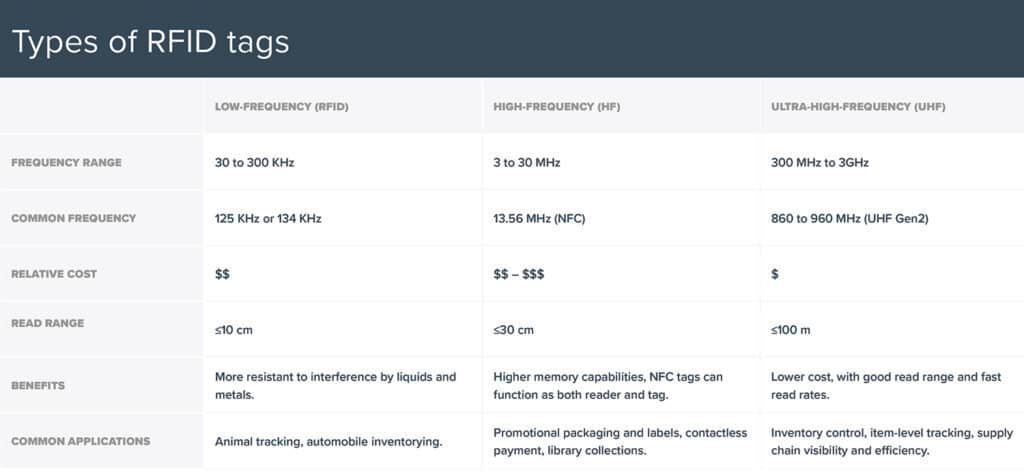Everyone uses RFID technology in their daily lives, most of the time without even realizing it. So, let’s dig a little deeper into learning more about RFID.
Radio Frequency Identification (RFID) is the non-contact wireless transmission of data using radiofrequency waves.
Users may automatically and uniquely identify and track inventories and assets by tagging them with RFID tags. RFID advances auto-ID technology by allowing tags to be read without requiring line of sight, with reading ranges ranging from a few centimeters to over 20 meters depending on the kind of RFID. Not only is technology improving year after year, but the cost of adopting and operating an RFID system is also decreasing, making RFID more cost-effective and efficient.

RFID tags (or labels) are best explained by comparing them to barcodes. RFID tags, like barcodes, are often used to obtain a product or pallet-level information rapidly. RFID tags, on the other hand, do not require direct line-of-sight to be read, which means entire pallets or truckloads of products can be read at speeds of up to 700 products per second. This provides RFID tags a distinct advantage when it comes to increasing supply chain visibility and efficiency.

Low-frequency (LF) RFID tags
The LF band encompasses frequencies ranging from 30 to 300 kHz. LF RFID systems typically operate at a frequency of 125 kHz, however, some do so at 134 kHz. This frequency band has a 10 cm read range, a slower read speed than the higher frequencies, and is less vulnerable to radio wave interference than the higher frequencies.
High-Frequency (HF) RFID tags
The HF band spans frequencies of 3 to 30 MHz. The majority of HF RFID systems operate at 13.56 MHz and have read ranges of 10 cm to 1 m. Interference sensitivity is moderate for HF systems. HF RFID is extensively utilized in applications such as ticketing, payment, and data transfer.
Ultra-high frequency (UHF) RFID tags
From 300 MHz to 3 GHz, the UHF frequency band is used. RAIN RFID systems employ the 860 to 960 MHz range and adhere to the UHF Gen2 standard. RAIN RFID systems in most nations operate between 900 and 915 MHz, with considerable variation in frequency from region to region.
Passive UHF systems have a read range of up to 12 meters, and UHF RFID has a quicker data transfer rate than LF or HF RFID. Although UHF RFID tags, antennae, and readers are the most susceptible to interference, several UHF product makers have found ways to design tags, antennas, and readers to maintain good performance even in challenging circumstances. Passive UHF tags are simpler and less expensive to produce than LF and HF tags.
Do you like it and want to try to use it in your project? Then you can make an RFID door look with Arduino